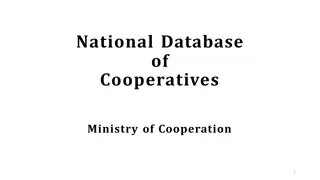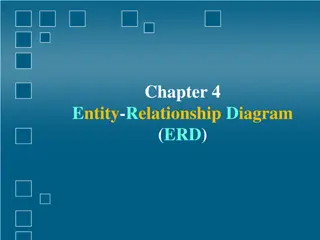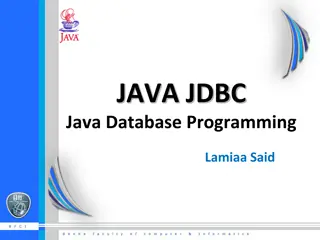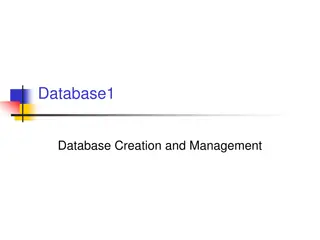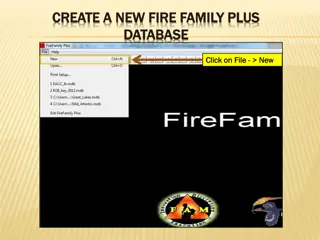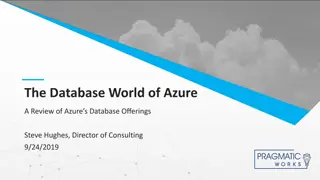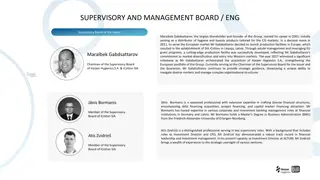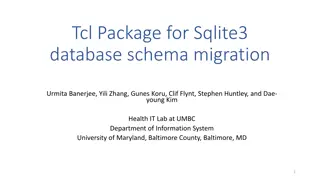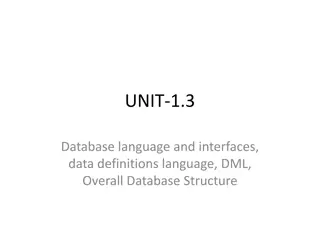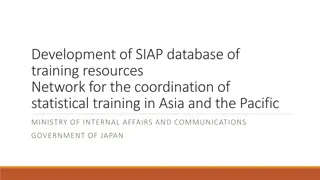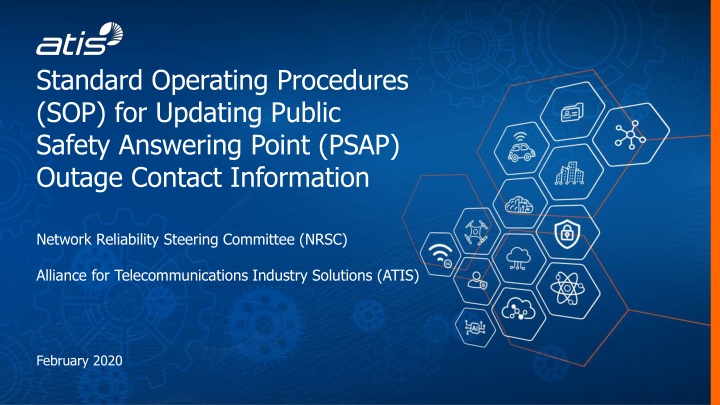
Updating Public Safety Answering Point Outage Contact Information Process
Learn about the Standard Operating Procedures for updating Public Safety Answering Point (PSAP) outage contact information developed by NRSC, ATIS. Find out about the project scope, task force membership updates, current data collection method, and the new streamlined data collection process. Enhance situational awareness and improve outage notifications for PSAPs.
Download Presentation

Please find below an Image/Link to download the presentation.
The content on the website is provided AS IS for your information and personal use only. It may not be sold, licensed, or shared on other websites without obtaining consent from the author. If you encounter any issues during the download, it is possible that the publisher has removed the file from their server.
You are allowed to download the files provided on this website for personal or commercial use, subject to the condition that they are used lawfully. All files are the property of their respective owners.
The content on the website is provided AS IS for your information and personal use only. It may not be sold, licensed, or shared on other websites without obtaining consent from the author.
E N D
Presentation Transcript
Standard Operating Procedures (SOP) for Updating Public Safety Answering Point (PSAP) Outage Contact Information Network Reliability Steering Committee (NRSC) Alliance for Telecommunications Industry Solutions (ATIS) February 2020
Project Scope September 11, 2017, 911 Outage Communications Workshop The FCC s Public Safety and Homeland Security Bureau (PSHSB) hosted a workshop to discuss Best Practices for improving situational awareness during 9-1-1 outages. In particular, the PSHSB examined how to strengthen PSAP 9-1-1 service outage notifications. NRSC Leadership The NRSC volunteered to lead the effort and opened ongoing NRSC meetings to non-NRSC members. This new group became the NRSC Situational Awareness for 9-1-1 Outages Task Force (NSA-TF), which met from 2017 through 2020. Two Deliverables ATIS-0100068, Standard Operating Procedures (SOP) for Collecting PSAP Outage Information (Published November 2019). ATIS-0100066, Service Providers: Outage Reporting Structure and Potential Types of 9-1-1 Outages (Published May 2018). 2
Current Collection Method Process Today, every Service Provider has its own process and timeline to gather PSAP outage contact information, which causes undue stress on all parties, including government and the private sector. In order to streamline the process, the NSA-TF developed ATIS-0100068, Standard Operating Procedures (SOP) for Collecting PSAP Outage Information, to aid in the standardization of data collection and to ease the impact on the government and private sector, as well as mitigate the above referenced issues. 4
New Data Collection Process (ATIS-0100068) Timeframe for Collecting Data: After the common contact database is initially populated, the NRSC recommends putting out a call for data (new or updated information) twice a year in the months of May and November. This time frame is just before and after common natural disaster timeframes, reducing the operational impact to the PSAP community. Collection Methodology: The NRSC recommends that the common database utilize electronic means for gathering PSAP contact data for outage notifications. This includes but is not limited to e-mail and secure web portals. Standardized Data: The data to be collected from the PSAP community is contained within the next three slides. The NRSC recommends this data as a standardized/best practice approach to ensure continuity throughout the industry. 5
New Data Collection Process (ATIS-0100068) (continued) Email Contact Address: It is also strongly recommended that each Public Safety entity develop and dedicate a group e-mail address for the purpose of outage notification and data collection efforts (e.g., PSAPOutageNotification@Comanche.gov). This e-mail inbox should be monitored 24/7. Escalation Process: The NRSC believes that it would be helpful to have regional or state-level contact information in addition to local data. However, the reality is contact information may come from a local PSAP, county, region, or a state level-entity that is authorized to represent a PSAP or group of PSAPs. The desire would be to have the PSAP community proactively manage their notification data. PSAPs that do not participate in providing contact information may not receive critical outage notifications due to outdated or errant data collected through manual efforts by each Service Provider. 6
Data Fields for PSAP Contact Information PSAP Name: The name of the PSAP (e.g., Fairfax County Department of Public Safety Communications, Seattle Police Department). PSAP FCC ID: The FCC issued Identification Number (e.g., 7346) of the PSAP. PSAP County: The county (or city) in which the PSAP is physically located. PSAP State: The state in which the PSAP is physically located. PSAP Zip Code: The zip code and/or optional extended zip code in which the PSAP is located. PSAP Designated Contact Name: The designated contact for the 911 facility to be notified of an outage or service disruption. FCC Title 47: Part: 4 Disruption of Communications Section: 4.9 (4). PSAP Designated Contact Title: The title of the designated contact at the PSAP that is being contacted (e.g., Director of PSAP). PSAP Designated Contact Telephone Number: The contact telephone number of the designated contact of the PSAP. This should be a 24/7 contact number. PSAP Designated Contact E-mail Address: The e-mail address of the designated contact of the PSAP. 7
Data Fields for PSAP Contact Information (continued) PSAP Administrative Contact: The PSAP contact during business hours for follow-up or non-outage communications. PSAP Administrative Contact Telephone Number: The contact telephone number of the administrative contact of the PSAP during business hours. PSAP Administrative E-Mail Address: The e-mail address of the administrative contact of the PSAP. 911 Authority: A local government, council, or appointed board, responsible for overseeing 9-1-1 Emergency Communications, if applicable. 911 Authority Contact Name: The contact name of the 911 Authority. 911 Authority Contact Telephone Number: The contact telephone number of the 911 Authority. 911 Authority Contact E-Mail Address: The e-mail address of the 911 Authority. Date Last Update/Validation - Application Feature: The date the information was updated or last validated. This data is provided by the application. Authority to Modify PSAP Contact Information (State Authority, COG, etc.): This is the name of the entity that has permission to modify PSAP contact information. 8
ATIS-0100066, Service Providers: Outage Reporting Structure and Potential Types of 9-1-1 Outages To provide additional insight into this complex communications environment, this document is designed to define, summarize and educate public safety 9-1-1 authorities on: The types of companies serving as service providers; The potential types of 9-1-1 outages; and The 9-1-1 services potentially impacted in an outage. 9
Types of Service Providers That May Report Wireless: Delivers telephony over a wireless connection Wireline: Delivers telephony over a wired connection VoIP: Delivers telephony using internet protocol technology over a broadband-capable connection as a managed service or an over-the-top application Covered 9-1-1 Service Provider: Provides processing and delivery of 9-1-1 calls and data to a set of PSAPs 10
Potential Types of 9-1-1 Impacts That Service Providers May Report When a degradation of service is experienced within a service provider s (e.g. wireline, wireless, VoIP, covered 9-1-1 service provider) network, or within a PSAP, the following types of 9-1-1 services are potentially, impacted: Voice: Call Delivery Impacted Full Complete loss of 911 call delivery Partial Loss of % of 911 call delivery Intermittent Loss of 911 call delivery irregularly Data: Automatic Number Identification (ANI) / Automatic Location Identification (ALI) Impacted Full Loss of either ANI or ALI or both Partial Loss of a portion of either ANI or ALI or both Intermittent Loss of a portion of either ANI or ALI or both irregularly 11
Template Definitions Company Performing PSAP Notification: In today s evolving 9-1-1 ecosystem, there are several types of companies potentially involved in the processing and delivery of a 9-1-1 call to a PSAP. 9-1-1 calls initiated by a caller are handled by a service provider. A service provider delivers the 9-1-1 call into a central 9-1-1 service system (serving multiple PSAPs within a county, region, or state). A 9- 1-1 service system may be provided by a Local Exchange Carrier, a third party, or a governmental 9-1-1 Authority. The service provider or the 9-1-1 system provider may be the first entity aware of the outage and may generate the PSAP notification. Company Experiencing Outage Event: As noted above, there are several types of companies potentially involved in the processing and delivery of a 9-1-1 call to the PSAP. The Company Experiencing Outage Event is the company that is responsible for the affected network and or systems. 12
Template Definitions (continued) Notification Type: Initial is intended to make the PSAP aware that a 9-1-1 service affecting event has been recognized and that restoration efforts are in process. The Initial notification also includes information about the failure or outage event owners (if known), contact methods, possible impacts, geography potentially impacted by the event (single- PSAP, regional, multi-state, or other), an expected time to resolution if known, and information on apparent cause, if known. Update is intended to provide the PSAP with information that has been gathered or determined in the interim between the Initial and the Final notifications. Updates will be provided if a significant change occurs in the status of the outage. If no update is provided, the PSAP can assume that the information remains the same. Final is intended to provide the PSAP with an awareness that all systems and networks are operating as designed. Additional information regarding the event may be included. 13
Template Definitions (continued) Impact of Outage Event: The Impact of Outage Event is intended to help the PSAP understand the ramifications of the outage event and guide the execution of the appropriate local contingency plan. The local contingency plan is typically different for a PSAP that is not receiving any 9-1-1 calls than a PSAP that is not receiving ALI or location data. Geography of the Outage Event: The Geography of the Outage Event (single- PSAP, regional, multi-state, or other) is directly related to the nature of the impacted system. For example, a cable cut could be very localized or impact an entire state, a network or database event could span multiple states. The information provided here is intended to help the PSAP understand the ramifications of the outage event and guide the execution of the appropriate local contingency plan. Depending on the nature of the outage, contingency planning may be a local, regional or state function. 14
Template Definitions (continued) Incident ID: Unique identifier associated with the outage event. Expected Date and Time to Resolution (ETTR)/Duration: The ETTR/Duration is intended to assist the PSAP in planning and execution of their local contingency plan. It is important to note that at the time of an Initial notification, the ETTR/Duration may not be known. Short duration outage events may be resolved prior to a company determining an ETTR. Cause of Outage Event: This information on apparent cause, if known, can provide guidance to the PSAP and/or 9-1-1 Authority. The initial evaluation of the cause (hardware, software, network, other) may be altered as more investigation takes place. 15
Template Definitions (continued) Additional Information on the Event (When Known): Companies may include additional, pertinent information. Companies may include list of all company served PSAPs receiving this same report. Time Format: The PSAP Outage Event notifications have standardized on a common date/time format to help the PSAP understand the presented information. The format is: XX:XX (Military time NO AM/PM) (Time Zone)(DD-MON-YY) The reporting company will determine what time zone to use. Company Specific Statement: Companies may attach dissemination instructions. 16
Questions 17


